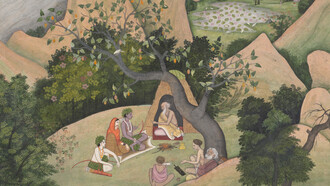Embarking on a journey to immerse yourself in Japan's rich culture and traditions is a privilege every traveller should cherish. Among the most exclusive experiences is the opportunity to be entertained by traditional Japanese female performers and hostesses. With their captivating dances and enchanting personalities, they create an experience that is truly unique to Japan. Don't miss out on this chance to delve into the depths of Japanese culture and create memories that will last a lifetime.
Before we embark on the rich history of Geisha, it's essential to delve into the depth and complexity of its terminology and etymology. Let's begin by unravelling these aspects to gain a profound understanding and appreciation for Geisha.
Geiko, a term used for geishas in Western Japan, including Kyoto and Kanazawa, is more than just a title. It's a reflection of the high regard and respect for geishas as skilled artists and entertainers. Geishas are professionals who can play shamisen, a traditional Japanese musical instrument, dance, and perform tea ceremonies. These skills are not just traditional Japanese arts, but they are also integral to geisha culture, playing a significant role in the preservation and promotion of these arts.
Geisha is a traditional female Japanese entertainer, hostess, and performing artist. The word geisha consists of two characters: gei, meaning art, and sha, meaning person.
Maiko: the term "woman of dance" is commonly used to refer to an apprentice geisha.
Minarai, in Japanese traditional culture, is a term used for a young woman who is in the process of learning the art of being a maiko. This is the second stage of a Maiko's training, which comes after the shikomi stage. The focus of this stage is to observe and learn from the senior geishas, mastering the art of conversation, traditional arts, and the intricate rituals of the tea ceremony.
In 2019, I had the opportunity to travel to Japan, where I spent my time exploring two traditional cities - Osaka and Kyoto. Osaka felt like a miniature Tokyo, with its bright lights and welcoming tourist environment that showcased a blend of modern and traditional influences. Kyoto, on the other hand, was deeply rooted in tradition, and I was fortunate enough to witness the beauty of Geishas. I was awestruck by their kimonos, makeup, and hairstyles, and I even got the chance to try it myself by learning about the tea ceremony. I was dressed up in an amazing, colourful, flowery kimono, and the lady who helped me to dress also made my hair look fabulous. This personal experience allowed me to appreciate the artistry and dedication of Geishas even more.
Interesting facts about Geishas:
- During the Edo period, male taikomochi, or houkan, served as the male equivalent of geishas.
- It takes almost two hours for the Geisha to get ready.
- Geishas in Japan used to blacken their teeth as a beauty practice, known as ohaguro.
- The handmade silk kimonos took three years to make.
- Geishas are not allowed to be in a romantic relationship.
I am impressed by the appearance of Maiko and Geisha. Although their makeup seems simple, with minimal use of colours, their hairstyle and outfit make the overall look fascinating. Both Maiko and Geisha apply a white foundation called oshiroi, followed by red and black makeup on their eyes and eyebrows. Their lips are coloured in red, and their cheeks in pink. I learned during the tea ceremony that geishas wear a kimono with up to 15 layers. The younger the geisha, the more vibrant the kimono. A kimono takes up to three years to make and is usually worn only once by geishas. During the minarai stage, the young woman wears a modified version of Maiko's outfit, with a shorter obi, shorter kimono sleeves, and more hair accessories. In the 17th century, the shimada hairstyle was developed. After World War II, geishas began using human hair wigs for convenience. Maikos can choose from five different hairstyles.
The beauty of geishas, maikos, and minarai lies in the fact that Japan still maintains this tradition, and many girls aspire to become a geisha. Their families take pride in their decision to become a geisha. I am fascinated by the fact that Japan is a highly modernized country but has still managed to preserve its unique traditions and way of life. I would love to learn more about Japan and also learn their language.















